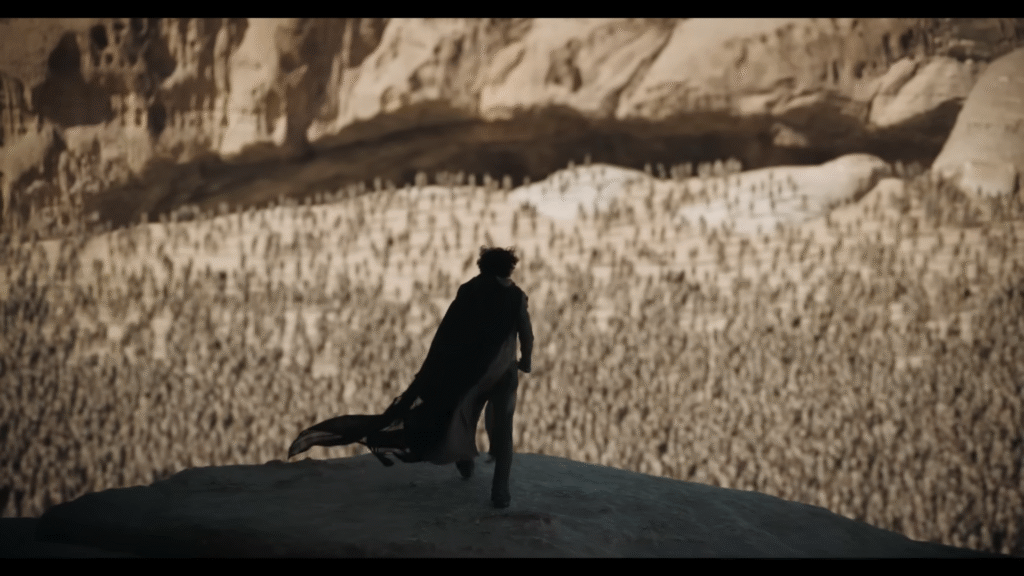Dune: Part Two Full Movie
Paul Atreides unites with Chani and the Fremen while seeking revenge against the conspirators who destroyed his family. Facing a choice between the love of his life and the fate of the universe, he must prevent a terrible future only he can foresee.
Introduction to Dune: Part Two
When Denis Villeneuve set out to adapt Frank Herbert’s legendary science-fiction novel Dune, many believed it would be an impossible task. The novel’s density, political depth, and philosophical undertones made it notoriously difficult to translate into cinema. Yet Villeneuve accomplished what others could not—delivering a visually stunning and thematically faithful adaptation in Dune: Part One (2021).
Dune: Part Two continues that journey, expanding the world of Arrakis with a story that is equal parts intimate and epic. Released in 2024, the film picks up where the first left off, following Paul Atreides as he embraces his destiny among the Fremen while preparing to face House Harkonnen and the Emperor himself. This is not just a sequel—it’s the payoff to years of storytelling, with breathtaking visuals, powerful performances, and deep philosophical questions woven together into an unforgettable cinematic experience.
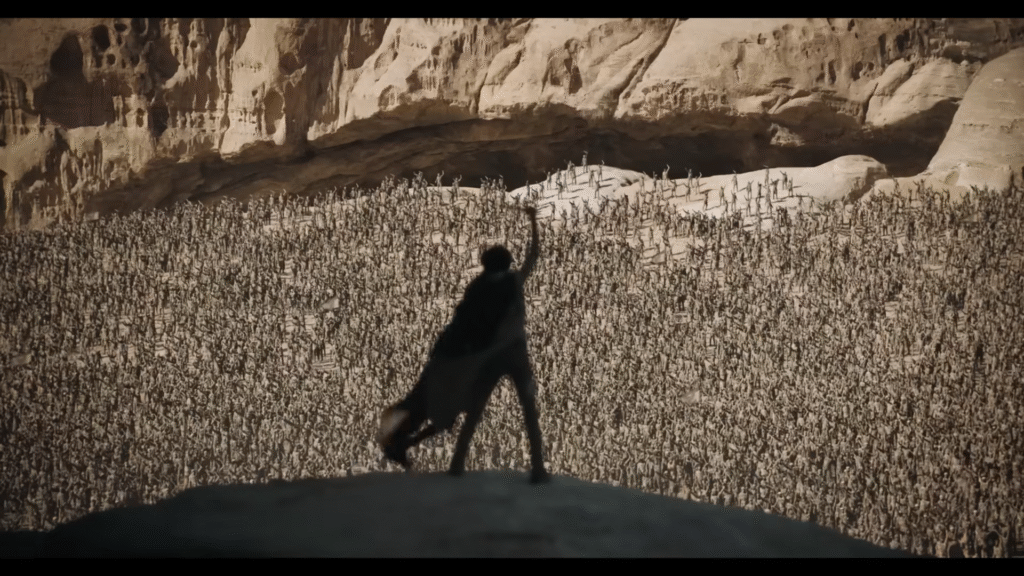
Background of the Dune Franchise
Frank Herbert’s Novel Legacy
Published in 1965, Frank Herbert’s Dune is widely regarded as one of the greatest science fiction novels ever written. It combined politics, religion, ecology, and human psychology in ways no other work had attempted. Its influence stretches far beyond literature—George Lucas drew inspiration for Star Wars from Herbert’s desert planet Arrakis, while countless writers and filmmakers borrowed its themes of prophecy, resource wars, and heroism.
Previous Adaptations
Before Villeneuve, filmmakers tried and often stumbled when adapting Dune. Alejandro Jodorowsky’s ambitious 1970s version never made it past pre-production. David Lynch’s 1984 adaptation, while visually imaginative, was criticized for being incoherent. A 2000 SyFy miniseries was closer to Herbert’s vision but lacked cinematic grandeur.
Villeneuve’s Vision for Dune
Denis Villeneuve, known for Blade Runner 2049 and Arrival, brought his meticulous eye for world-building to the franchise. He chose to split Herbert’s dense novel into two films, allowing time to explore its politics, spirituality, and relationships. Part One was a slow-burn introduction; Part Two is the grand payoff—filled with battles, betrayal, romance, and prophecy.
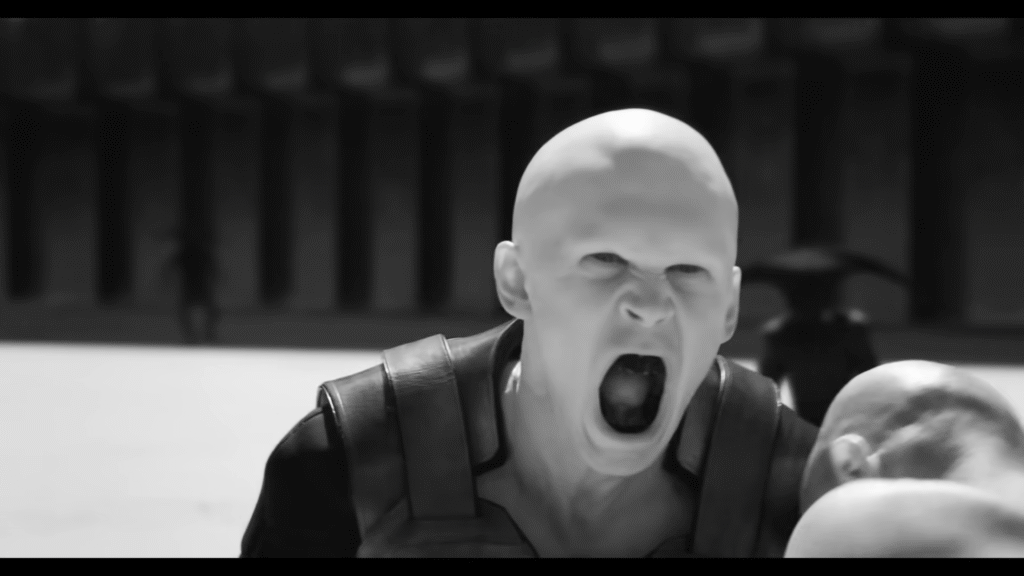
Recap of Dune: Part One
To appreciate Dune: Part Two, it’s important to revisit the journey so far.
Key Events Leading to Part Two
In Part One, House Atreides was given control of Arrakis by the Emperor, a political maneuver that was actually a death sentence. Duke Leto Atreides (Oscar Isaac) was betrayed and killed, leaving his son Paul (Timothée Chalamet) and Lady Jessica (Rebecca Ferguson) stranded in the desert. With the help of the Fremen, Paul begins to accept his destiny as the prophesied figure known as the “Kwisatz Haderach.”
The Importance of Paul’s Journey
Paul’s arc in Part One was not about being a hero but about realizing the weight of expectations placed upon him. As he begins to see visions of a potential future filled with religious wars waged in his name, he faces the terrifying responsibility of destiny. Part Two explores whether Paul will embrace or resist the path set before him.
Storyline of Dune: Part Two
Paul Atreides and the Fremen
The sequel begins with Paul fully immersed in Fremen culture. He learns their ways, fights alongside them, and rises as a leader. His relationship with Stilgar (Javier Bardem) deepens, as Stilgar begins to view Paul as the messianic figure the Fremen have long awaited.
Chani’s Expanded Role
Zendaya’s Chani, who had limited screen time in Part One, emerges as a central figure in Part Two. She is not just Paul’s love interest but his anchor to humanity, questioning the manipulation of prophecy and warning him against blind faith. Their romance is tender yet fraught with the tension of destiny versus free will.
House Harkonnen’s Grip on Arrakis
Meanwhile, House Harkonnen continues its brutal control of spice production. Baron Harkonnen (Stellan Skarsgård) schemes from the shadows, while his psychotic nephew Rabban (Dave Bautista) rules through fear. Yet the introduction of a new player, Feyd-Rautha (Austin Butler), raises the stakes.
Feyd-Rautha’s Introduction
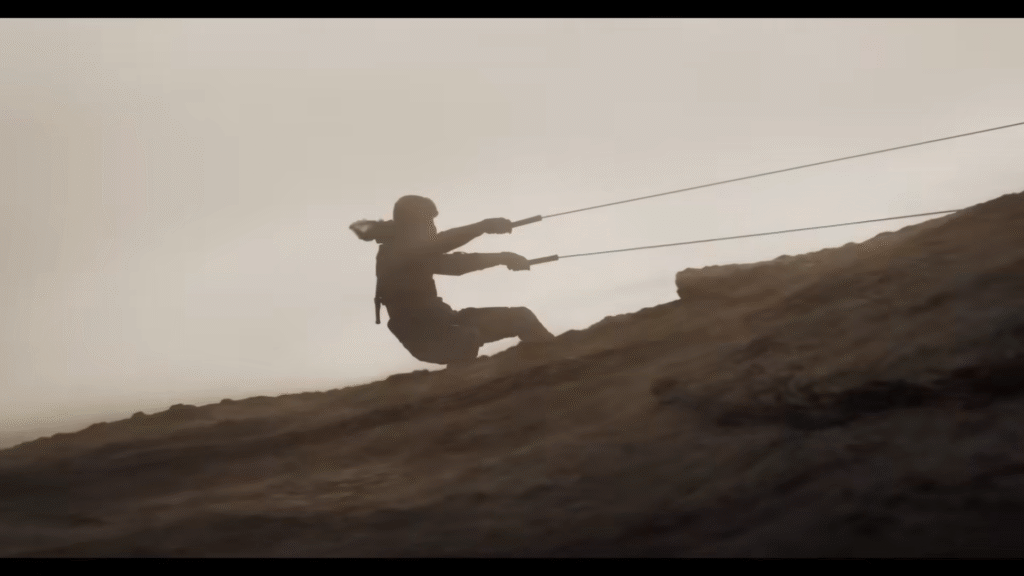
Feyd-Rautha is everything Paul is not—ruthless, charismatic, and bred for cruelty. His introduction in the gladiatorial arena showcases his viciousness, positioning him as Paul’s ultimate rival. Butler’s performance brings a chilling energy to the role, setting up a climactic confrontation.
The Rising Rebellion
As Paul leads guerilla attacks against Harkonnen spice operations, his legend grows among the Fremen. The prophecy begins to take shape, though Paul remains haunted by the future he envisions—a galaxy-wide holy war fought in his name.
Themes Explored in Dune: Part Two
Prophecy and Destiny
One of the most powerful themes in Dune: Part Two is the weight of prophecy. Paul Atreides is caught between the expectations of the Bene Gesserit’s long-laid religious manipulations and his own visions of the future. The Fremen believe he is their “Lisan al Gaib,” the messiah who will lead them to freedom. But Paul’s visions suggest something darker: a holy war that will sweep across the universe in his name.
This tension gives the film its moral complexity. Unlike many sci-fi heroes, Paul is not a simple savior. He is painfully aware that embracing prophecy could mean unleashing destruction on a galactic scale. Villeneuve presents destiny not as a gift, but as a burden.
Colonialism and Power Struggles
At its heart, Dune has always been a story about colonialism. The fight for Arrakis mirrors real-world struggles over resources like oil. The Harkonnens exploit the desert planet for spice, showing no regard for the lives of the Fremen. The Emperor manipulates noble houses like chess pieces to maintain his power.
In Part Two, these power struggles come to a head. Paul must decide whether to use the Fremen’s passion for liberation to challenge the Empire or resist becoming another exploiter of their faith.
Religion and Manipulation
The Bene Gesserit’s centuries-long manipulation of Fremen prophecy takes center stage in this sequel. Lady Jessica, now a Reverend Mother, helps fan the flames of Paul’s messianic image. Yet Chani remains skeptical, grounding Paul by reminding him that faith can be both a weapon and a prison.
This exploration of religion—its beauty and its danger—makes Dune: Part Two more than just a sci-fi adventure. It’s a meditation on how belief can be used to empower or to enslave.
Environmentalism and the Spice
Arrakis itself is a character in the film. The desert, the sandworms, and the spice are more than set pieces—they symbolize the delicate balance between humanity and nature. The Fremen dream of terraforming Arrakis into a lush world, but such a change would destroy the sandworms and the spice.
The film forces viewers to confront questions about environmental stewardship and exploitation. Should progress come at the expense of nature? Or is the preservation of a planet’s ecosystem more important than human ambition?
Love vs. Duty
At the emotional core of Dune: Part Two is the love story between Paul and Chani. Their bond is genuine, filled with tenderness and vulnerability. Yet Paul knows that his duty may require him to marry Princess Irulan (Florence Pugh) for political reasons. This clash between personal love and political responsibility gives the film its tragic undercurrent.
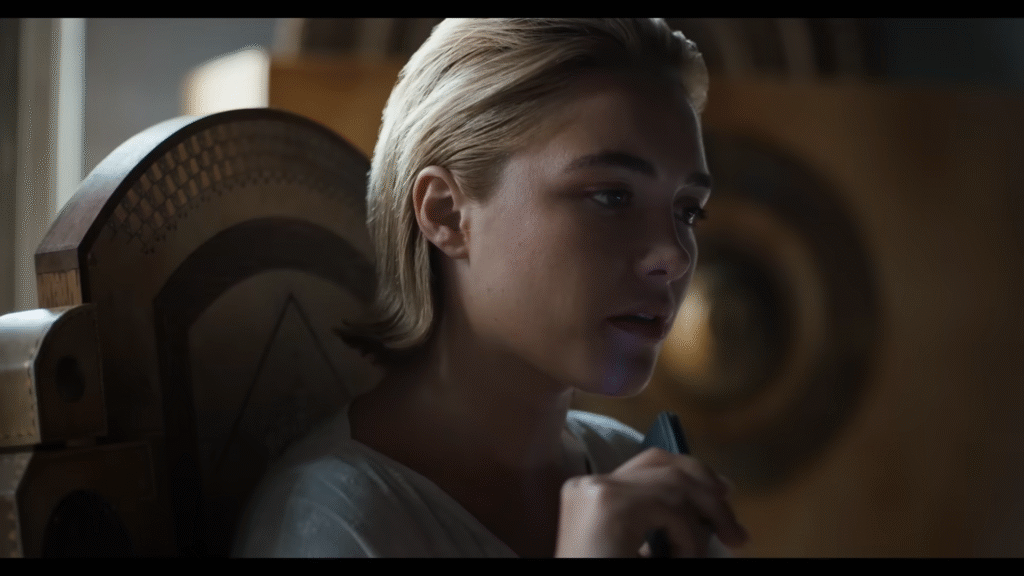
Characters and Performances
Timothée Chalamet as Paul Atreides
Chalamet delivers a performance that captures both vulnerability and strength. In Part One, Paul was a boy caught in forces beyond his control. In Part Two, he transforms into a leader. Chalamet balances quiet introspection with fiery determination, making Paul’s journey feel both human and mythic.
Zendaya as Chani
Zendaya shines in her expanded role. No longer a figure from Paul’s dreams, Chani becomes the emotional anchor of the story. She challenges Paul’s choices, questions prophecy, and refuses to be a passive figure in his destiny. Her performance is layered—fierce, tender, and deeply human.
Rebecca Ferguson as Lady Jessica
Ferguson brings intensity to Jessica’s transformation into a Reverend Mother. Her performance captures the conflict between maternal love and Bene Gesserit duty. At times manipulative, at times protective, Jessica embodies the moral ambiguity at the heart of Dune.
Austin Butler as Feyd-Rautha
Butler’s Feyd-Rautha is mesmerizing and terrifying. Introduced in a black-and-white gladiatorial sequence, he exudes charisma and menace. Unlike Rabban’s brute force, Feyd is cunning and calculating—a perfect foil to Paul. Butler’s performance elevates Feyd from villain to one of the film’s most compelling figures.
Supporting Cast Highlights
Javier Bardem as Stilgar provides moments of gravitas and humor, embodying the faith of the Fremen.
Stellan Skarsgård as Baron Harkonnen remains a grotesque presence, his schemes shadowing every scene.
Dave Bautista as Rabban adds brute intensity, contrasting Feyd’s cunning.
Florence Pugh as Princess Irulan makes a strong impression, setting the stage for future installments.
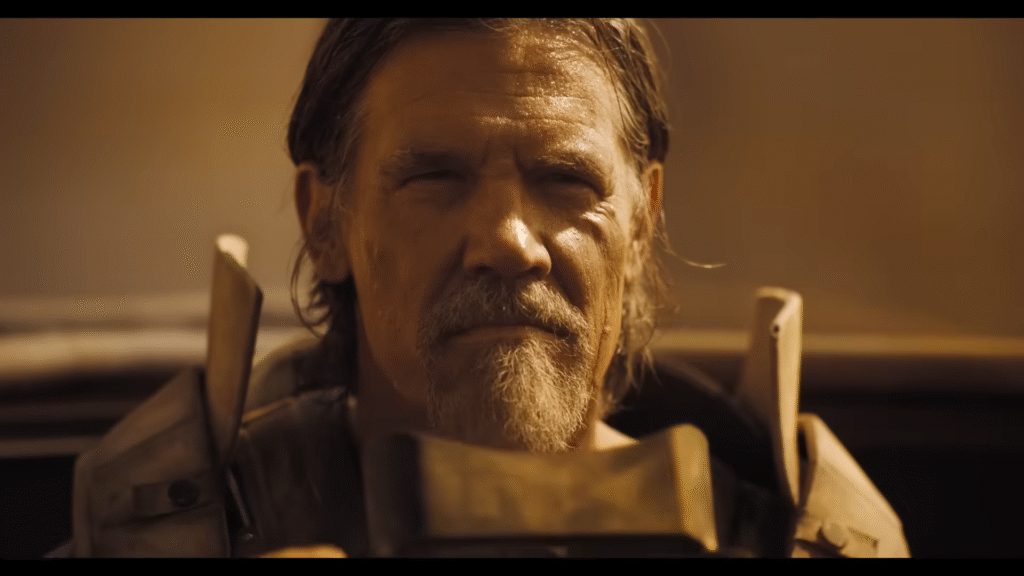
Cinematic Excellence
Visual Mastery and Cinematography
Greig Fraser’s cinematography is nothing short of breathtaking. The desert landscapes of Arrakis are captured with grandeur and intimacy, immersing the audience in both the vastness of the desert and the closeness of human struggle. Scenes shift seamlessly from sweeping sandworm battles to quiet moments of intimacy, balancing scale with emotion.
Hans Zimmer’s Score
Zimmer’s score is otherworldly. From throat-singing chants to haunting orchestral swells, the music adds a primal intensity to every scene. His use of unconventional instruments and vocal arrangements gives Dune: Part Two a soundscape unlike any other film.
Costume and Production Design
The production design immerses viewers in the cultures of Arrakis. From the ornate costumes of the imperial court to the practical stillsuits of the Fremen, every detail feels authentic. The Harkonnen world is rendered in stark, gothic tones, while Fremen culture is earthy and organic.
Action and Battle Sequences
Desert Warfare
The Fremen guerrilla attacks against spice operations are some of the film’s most thrilling moments. The hit-and-run tactics, blending seamlessly with the desert, showcase the ingenuity of a people fighting against an empire.
Sandworm Integration
One of the most jaw-dropping sequences is Paul learning to ride a sandworm. The scale, the visual effects, and the sheer audacity of the moment make it one of the most iconic scenes in modern sci-fi.
Duel Between Paul and Feyd-Rautha
The climactic duel between Paul and Feyd is intimate and brutal. Stripped of armies and spectacle, it’s a battle of wills as much as blades. The tension, choreography, and emotional stakes make it a fitting conclusion to the film.
